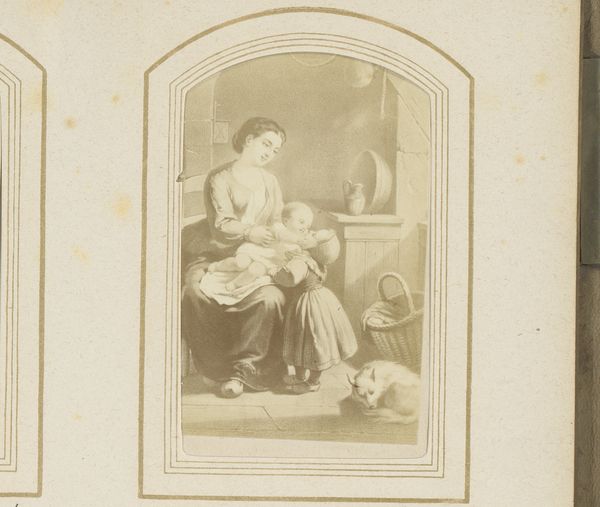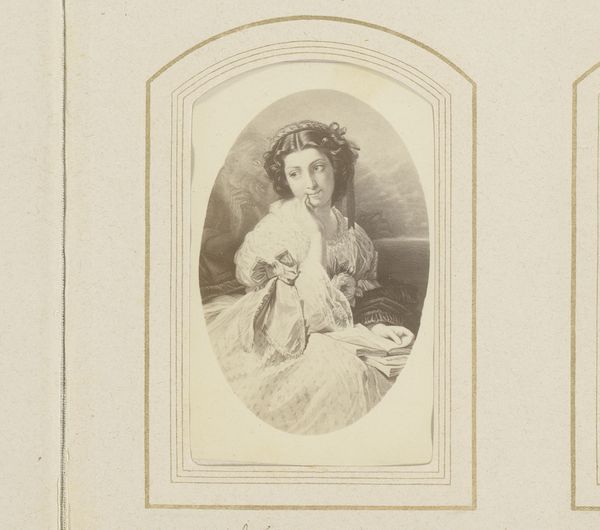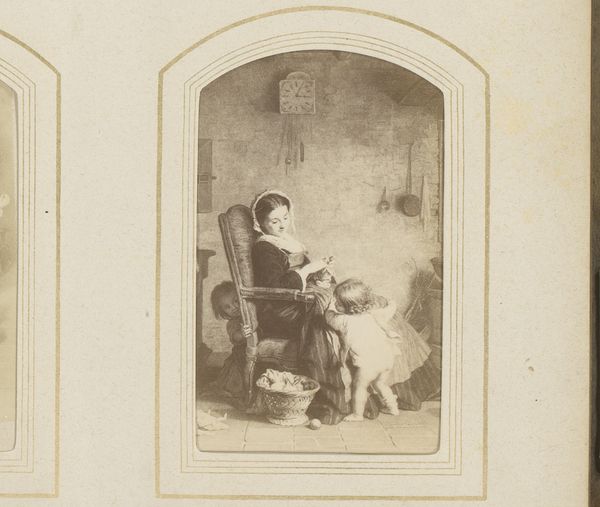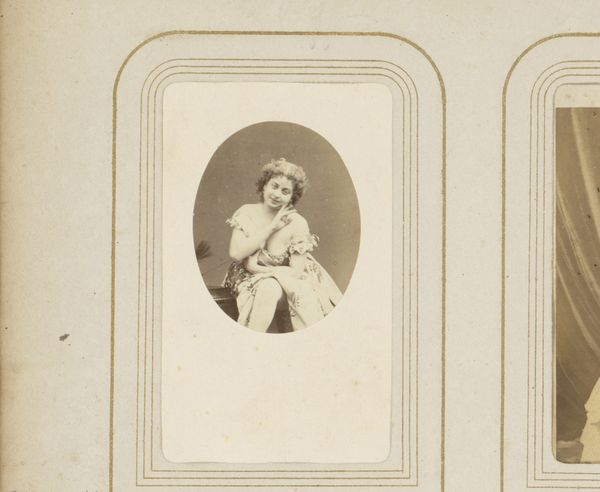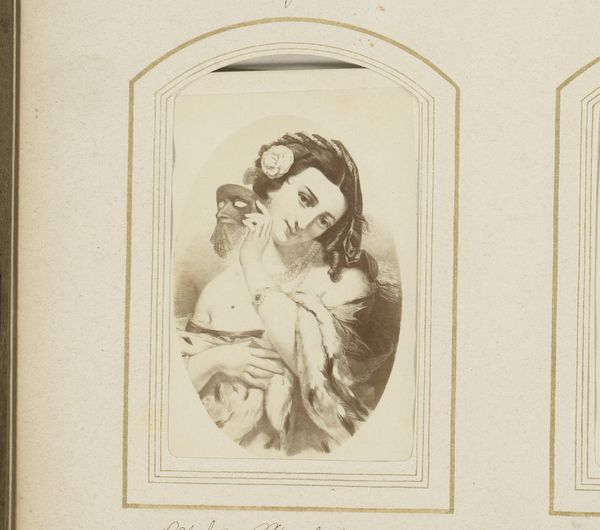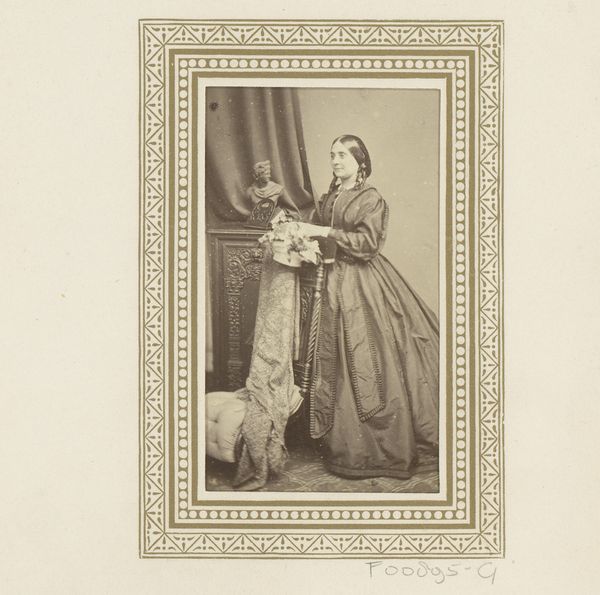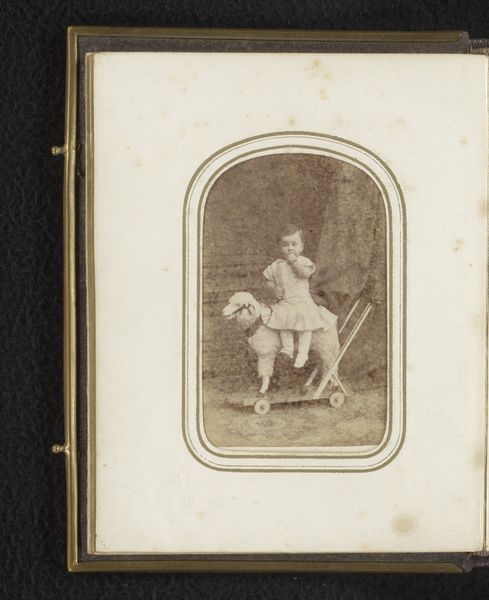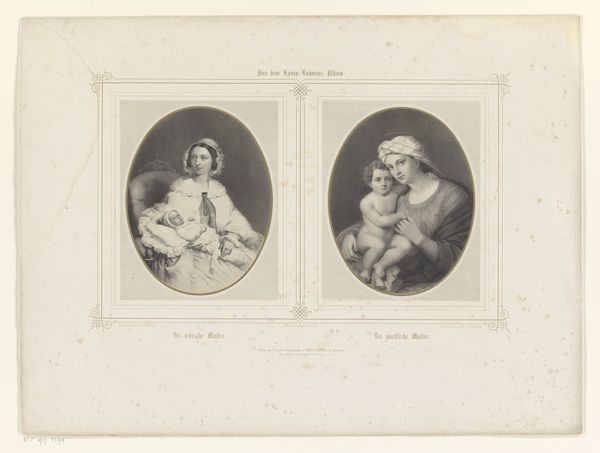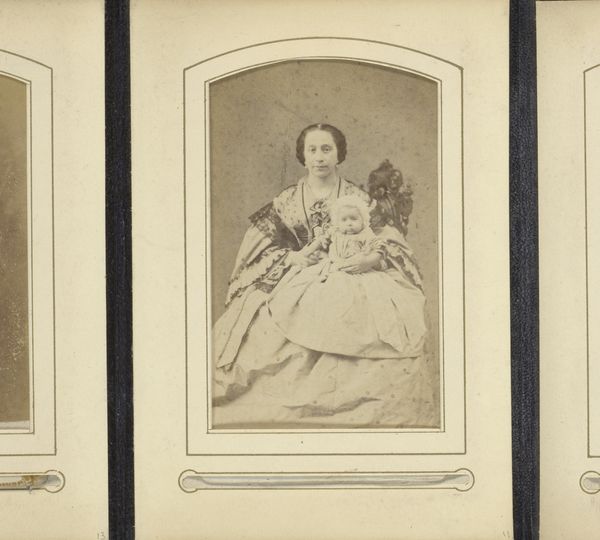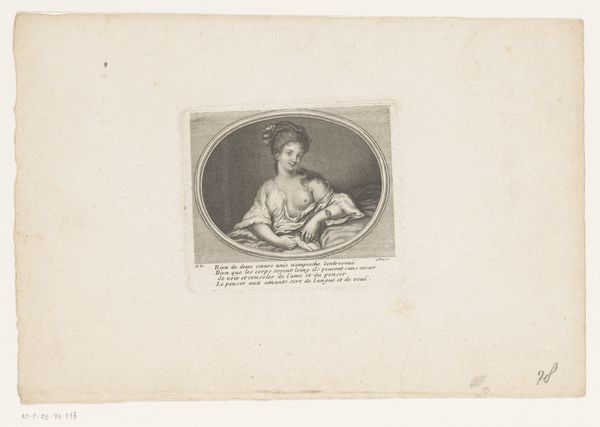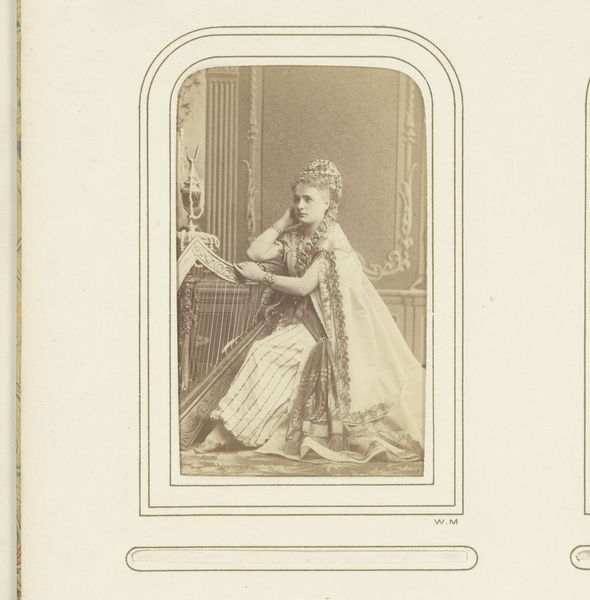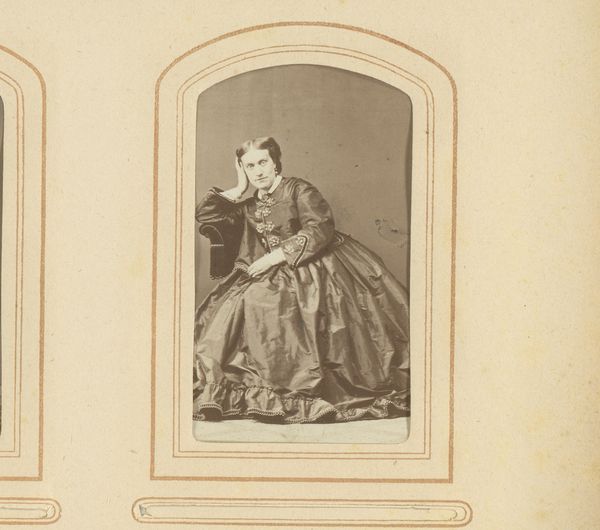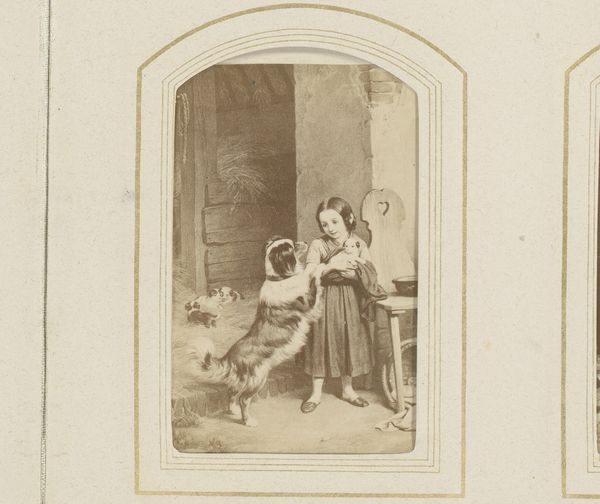
Dimensions: height 84 mm, width 51 mm
Copyright: Rijks Museum: Open Domain
Curator: Immediately I'm struck by how posed and theatrical this image feels. It's as if a scene from a play has been captured in monochrome, slightly faded light. There's almost an uncanny flatness about the arrangement. Editor: Indeed. We are looking at an early photographic print, "Fotoreproductie van Des Forsters Tochter", a gelatin-silver print dating roughly between 1870 and 1890. Though anonymous, it clearly aspires to something beyond mere documentation. Curator: It feels so staged. The dogs all poised with their gaze, almost like they're performing for treats, or a cue to jump. It almost looks like an advertisement... dog food? Editor: Note the gesture of the daughter offering food from a tray. Food as an offering has deep roots. In Roman times, dogs were often fed special cakes to appease them. But I think here the symbolism lies in portraying the domestic idyll: abundance, harmony, the woman as giver, the dogs as loyal recipients. It echoes the Romantic artistic movement fascination with simple folk life. Curator: Hmm, it’s a little…creepy? There is also this almost claustrophobic sense in its spatial construction. Editor: Well, it is staged to evoke closeness; the number of dogs crowded around emphasizes that. The dark tonality overall gives a feeling of solemnity. But, there’s a tension at play. There's both security and a palpable vulnerability in that staged harmony. She, trapped in her social performance, they, desperate and hoping for reward. It’s the beauty of Romanticism—that balance. Curator: Now that you say it...It feels now it carries with it the subtle tension of societal expectation, a yearning for simple comfort amid the constraints of high-society expectation perhaps? The dogs certainly add that layer of needing some simplicity. Editor: Precisely. And it highlights, once more, the enduring power of photography to freeze fleeting moments and infuse them with layers of deeper meaning, even unintentionally. The photographic process then has become part of cultural memory of what once were values, even today! Curator: Absolutely. The artist wanted an idealized harmony; we read both a constructed and a truthful view of that yearning to be surrounded by pure, good love of canine creatures. And to think it all started with a plate of food!
Comments
No comments
Be the first to comment and join the conversation on the ultimate creative platform.
